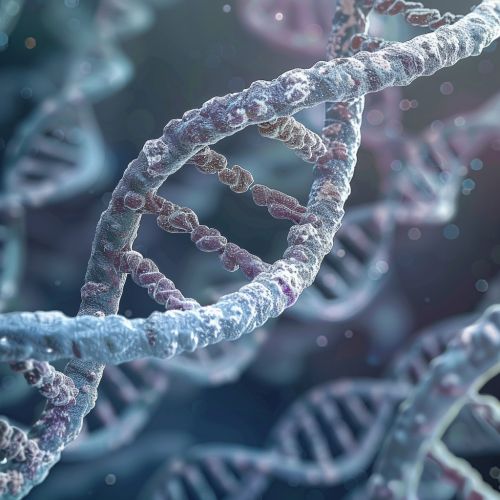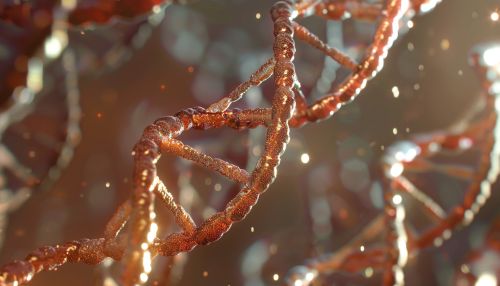Genomic instability
Introduction
Genomic instability is a high frequency of mutations within the genome of a cellular lineage. This is a characteristic of many cancer cells that distinguishes them from normal cells. The mutations may affect single base pairs, specific genes, or whole chromosomes. This instability can lead to changes in gene expression and function, which can contribute to the development and progression of cancer. Genomes are normally stable, and cells have mechanisms to repair damage and prevent mutations. However, in some cases, these mechanisms can be overwhelmed or become defective, leading to genomic instability.
Causes of Genomic Instability
There are several causes of genomic instability, including both intrinsic and extrinsic factors.
Intrinsic factors are those that are inherent to the cell or organism, such as errors in DNA replication or repair mechanisms. These errors can occur spontaneously during the normal life cycle of a cell, or they can be induced by certain genetic disorders, such as Bloom's syndrome or ataxia-telangiectasia, which are characterized by a high rate of genomic instability.
Extrinsic factors are those that come from the environment, such as exposure to radiation or certain chemicals. These factors can cause DNA damage, which if not properly repaired, can lead to mutations and genomic instability. For example, exposure to ultraviolet (UV) radiation can cause thymine dimers, which are a type of DNA damage that can lead to mutations if not repaired.


Mechanisms of Genomic Instability
There are several mechanisms by which genomic instability can occur, including chromosomal instability, microsatellite instability, and epigenetic instability.
Chromosomal Instability
Chromosomal instability refers to changes in the number or structure of chromosomes. This can occur as a result of errors in DNA replication, cell division, or repair mechanisms. For example, if a cell divides before all DNA damage has been repaired, it can result in daughter cells with incomplete or incorrect chromosomes, leading to genomic instability.
Microsatellite Instability
Microsatellite instability is characterized by changes in the length of microsatellites, which are short, repeated sequences of DNA. These changes can occur as a result of errors in DNA replication or repair. For example, if the DNA polymerase slips during replication, it can result in the addition or deletion of repeat units, leading to genomic instability.
Epigenetic Instability
Epigenetic instability refers to changes in gene expression that are not caused by changes in the DNA sequence itself. Instead, these changes are caused by modifications to the DNA molecule or the proteins that it is wrapped around, which can affect how genes are turned on or off. For example, methylation of DNA can silence genes, and if this process is disrupted, it can lead to changes in gene expression and genomic instability.
Consequences of Genomic Instability
The consequences of genomic instability can be severe, as it can lead to changes in gene expression and function, which can contribute to the development and progression of diseases such as cancer. For example, mutations in tumor suppressor genes or oncogenes can lead to uncontrolled cell growth and proliferation, which is a hallmark of cancer.
In addition to cancer, genomic instability can also contribute to aging and age-related diseases. As cells age, they accumulate more and more mutations, which can lead to changes in gene expression and function. This can contribute to the decline in cellular function that is associated with aging, and it can also increase the risk of developing age-related diseases such as Alzheimer's disease or Parkinson's disease.
Prevention and Treatment of Genomic Instability
There are several strategies for preventing and treating genomic instability. These include enhancing DNA repair mechanisms, protecting against DNA damage, and targeting cells with genomic instability for destruction.
Enhancing DNA repair mechanisms can be achieved through the use of certain drugs or gene therapies. For example, PARP inhibitors are a type of drug that can enhance the repair of DNA damage, and they are currently being used in the treatment of certain types of cancer.
Protecting against DNA damage can be achieved through lifestyle changes, such as avoiding exposure to radiation or certain chemicals, and through the use of certain drugs or supplements. For example, antioxidants can protect against DNA damage caused by reactive oxygen species, which are a type of free radical.
Targeting cells with genomic instability for destruction can be achieved through the use of certain drugs or therapies. For example, certain types of chemotherapy or radiation therapy can target and kill cancer cells, which often have a high degree of genomic instability.
